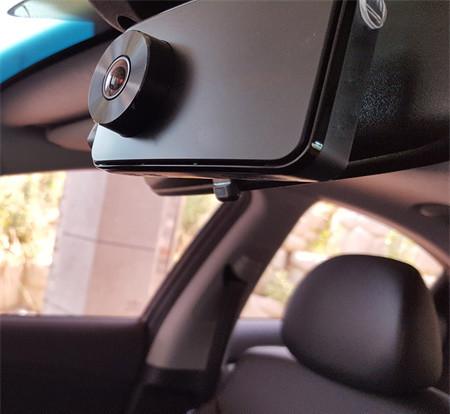
Vehicle camera includes internal view camera, rear view camera, front view camera, side view camera, surround view camera and other five types, the current camera in the car is mainly used in the reverse image (rear view) and 360 degree panoramic view (surround view), high-end car various auxiliary equipment equipped with as many as 8 cameras, for assisting the driver to park or trigger emergency braking. With the rapid development of ADAS, in-vehicle cameras play an irreplaceable role in the intelligent driving ADAS system, and it is expected that the number of cameras in future cars will reach more than 12, and models above the L3 level will have higher demand.
First, the function of the car camera
In addition to the common image transmission, recording information, and safety monitoring, the functions of the vehicle camera are more important as an important component of the ADAS system, which can well realize the safety auxiliary functions of ADAS, such as:
1) Lane departure warning LDW
Lane Detection Waring system (Lane Detecting Waring) is mainly composed of HUD head-up display, camera, controller and sensor, when the lane departure system is turned on, the camera will always collect the marking line of the driving lane, through image processing to obtain the position parameters of the car in the current lane, when the car is detected to deviate from the lane, the sensor will collect the vehicle data and the driver's operating status in time, and then the controller will issue an alarm signal. The whole process is completed in about 0.5 seconds, providing more reaction time for the driver. If the driver turns on the turn signal and normally changes the line, the lane departure warning system will not make any prompts.
2) Forward collision warning FCW
The Auto Collision Warning System (Forward Collision Warning) is mainly used to help drivers avoid major traffic accidents such as high-speed and low-speed rear-end collisions, unconscious departure from lanes at high speeds, and collisions with pedestrians. Helping the driver like a third eye, continuously detecting the road conditions in front of the vehicle, the system can identify and judge a variety of potentially dangerous situations, and through different sound and visual reminders, to help the driver avoid or mitigate collisions.
3) Pedestrian collision warning PCW
Pedestrian Collision Warning (Pedestrian Collision Warning) is when the vehicle detects that it is about to collide with the pedestrian, and it issues an alarm to prompt the driver of the vehicle to adjust the running state of the vehicle in time.
4) Traffic sign identification TSR
Through the feature recognition algorithm, the traffic signs in the roads through the road are recognized, prompting early warnings or automatically adjusting the operating status of the vehicles, so as to improve the safety and compliance of the vehicles.
5) Blind spot monitoring BSD
The Blind Spot Monitoring System displays images of the blind areas of the car's left and right rearview mirrors through a side camera or radar.
6) Driver attention monitoring
It is used to detect whether the driver is tired driving, closing his eyes, etc
7) Panoramic parking SVP
The panoramic parking assistance system consists of four ultra-wide angle fisheye cameras installed in front of and behind the front and back of the vehicle, while collecting the images around the vehicle, and the image processing unit distorts the perspective to transform the image splicing image to enhance, and finally forms a 360-degree panoramic top view of the seamless around the vehicle. While displaying the panorama, you can also display a single view of either side and accurately locate the location and distance of the obstacle with the ruler line.
8) Parking Assist PA
Parking assistance is a car parking or reversing when the safety assistance device, the current mainstream is the reversing camera and on-board display composed of parking assistance system, reversing in front of the display can display the real-time video of the rear reversing camera, so as to reverse more safely, the secondary is composed of ultrasonic sensors, controllers and displays and other parts.
9) Lane Keeping Assist LKA
It can be understood as an enhanced version of the LDW, when it detects that the vehicle is about to deviate from the lane line, it issues instructions to the steering motor to correct the driving direction of the vehicle.
2. Vehicle camera performance test items
1) Optical performance test
Test the project
Effective Pixels, Auto Gain, System Delay, Frame Rate, Brightness and Color Uniformity, Start Time, Field of View, Optical Axis Center Accuracy, Glare, White Balance, Maximum Illumination, Color Reproduction, SNR, Minimum Illumination, MTF Value, Ghost.
2) Electrical performance test
DC supply voltage, supply voltage slowdown and fast rise, open circuit, overvoltage,
Supply voltage transients, short circuit protection, superimposed AC voltage, reverse voltage,
Insulation resistance, supply voltage ramp-down and ramp-up, short interruption of power supply, reference ground, and power supply offset.
3) Dustproof and waterproof performance
Installation position: the outside of the car compartment
Protection class: IP6K7/IPX9K
Installation position: Inside the passenger compartment of the car
Protection class: IP6K4
Note: IPX9K is only available for appearances after loading
4) Mechanical properties
Mechanical vibration, free drop, lens wear resistance, mechanical impact, gravel impact, harness pull-off force
5) Environmental weather resistance
Temperature and humidity range, damp and heat cycle, salt spray corrosion, temperature performance, including: low temperature resistance, temperature resistance, temperature gradient, temperature cycle, high and low temperature alternating, ice water impact, climate aging, installed in the car cabin interior non-direct sunlight high temperature area products are not required.
6) Chemical load performance
7) Electromagnetic compatibility
Electrical disturbances caused by electrostatic discharge, electrical disturbances caused by conduction and coupling
Immunity to electromagnetic radiation, radio disturbance characteristics
8) Durability